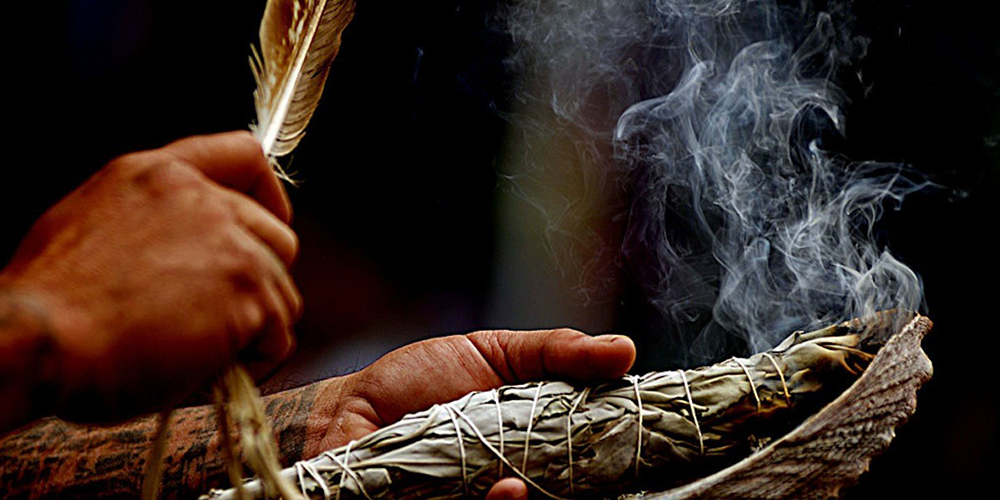 Smudging
Smudging
This process cleanses away the negativity energy. Usually Sage, sweetgrass and tobacco are mixed together. They are burnt and the smoke is released and fanned over the recipient using a eagle feather. It is believed the negative thoughts of the person are taken upon the smoke up into the air to the creator, The Great Spirit. It is a form of healing.
The Sage represents the desert and everything it is. The Sweetgrass is found upon the mountains and once it is burnt the fragrance is symbolic of where it was found.
CHANTING
Chanting is a method of evoking prayer to the Creator. The chants were all different depending what message or ceremony it represented. Common reasons for chanting, rain dance, for the deceased, healing, war, celebrations. The chanting would also coincide with movement such as dancing in the four directions South, West, East and North. The chants were also named in regards to what purpose and reason it was used for. Chanting went hand in hand with other rituals in ceremony such as ceremonial dancing, the way the body was painted, the beat of the drums, singing.
 GHOST DANCE
GHOST DANCE
The Ghost Dance was led by Wovoka (Northern Pauite) in 1889-1890. He received visions in a solar eclipse on New Years Day 1889 and spoke about, the world that he had known was going to end and a better one was coming with plenty of bison, tall green grass, plentiful streams and beautiful wild horses. The dead of the first nations people would be resurrected and flourish. The whites would perish. Mediation, prayer, singing and dancing continuously to the creator was needed to bring the prophecy to life. Wovoka was named “Red Man’s Christ” and had a dedicated following, The Ghost Dance spread so rapidly to other tribes, Cheyenne, Sioux, Shoshone and Arapaho. They started wearing “ghost shirts” that were believed would protect them from bullets.
The U.S Bureau of Indian Affairs Agents became anxious and nervous about these gatherings, they became on edge presuming some sort of uprising may occur. This led to the arrest of Sitting Bull hoping this would settle and stop the religious cult. It didn’t and led to Sitting Bull’s death in a scuffle with Indian policemen.
The Seventh Cavalry were ordered to take control of the situation which led them towards Wounded Knee Creek in South Dakota on December 29, 1890. Troops led by Colonel James Forsyth came upon the Sioux. A scuffle broke out due to a gun accidentally firing which led to a massacre. The Sioux lost 250-300 men, women and children and 41 wounded. Twenty five soldiers killed and 39 wounded. After this The Ghost Dance religion disintegrated and Wovoka lost followers. He actually lived till the year 1932.
Wounded knee Battlefield is a National Historic Landmark by U.S Department of the Interior.


